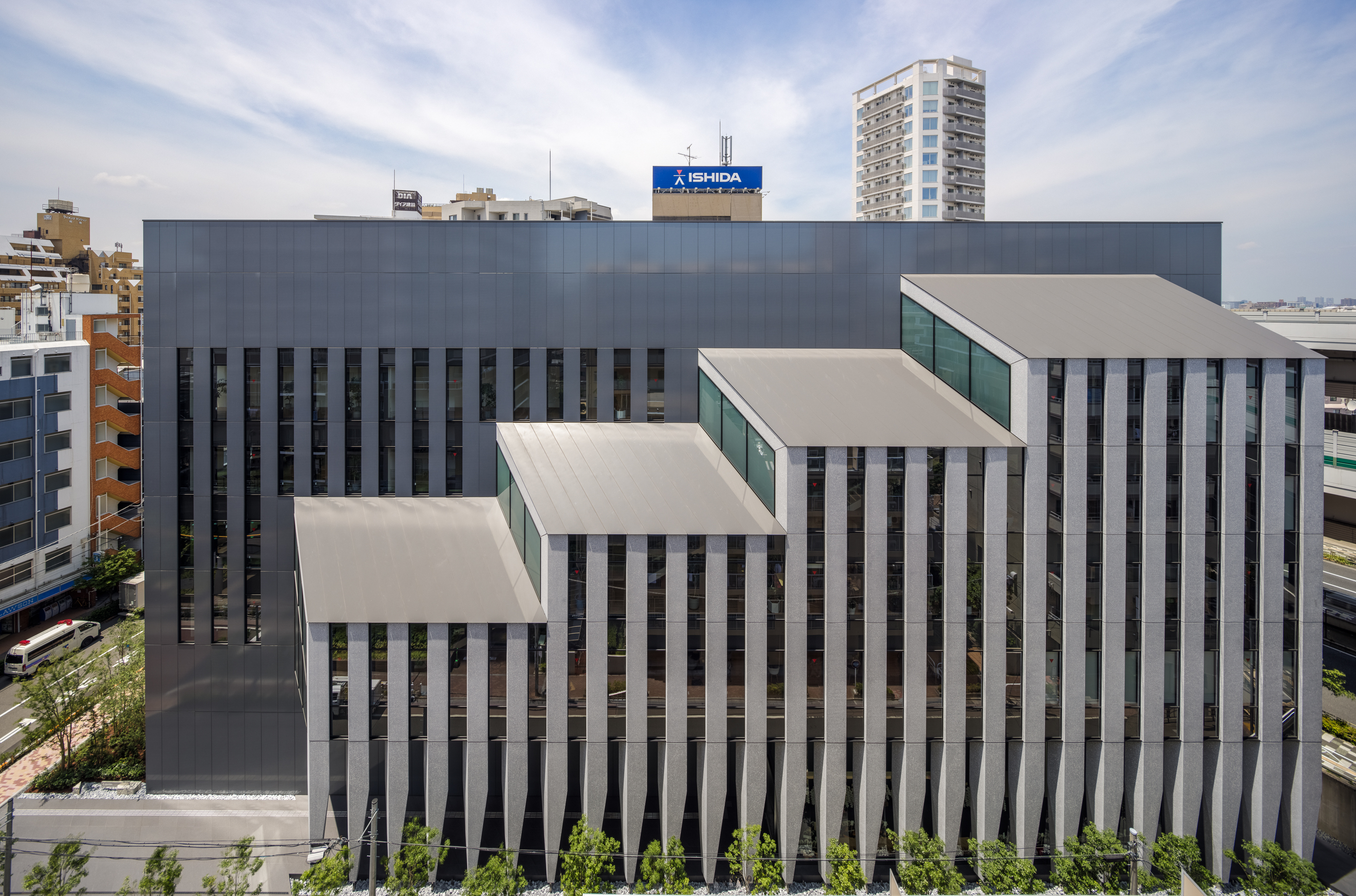
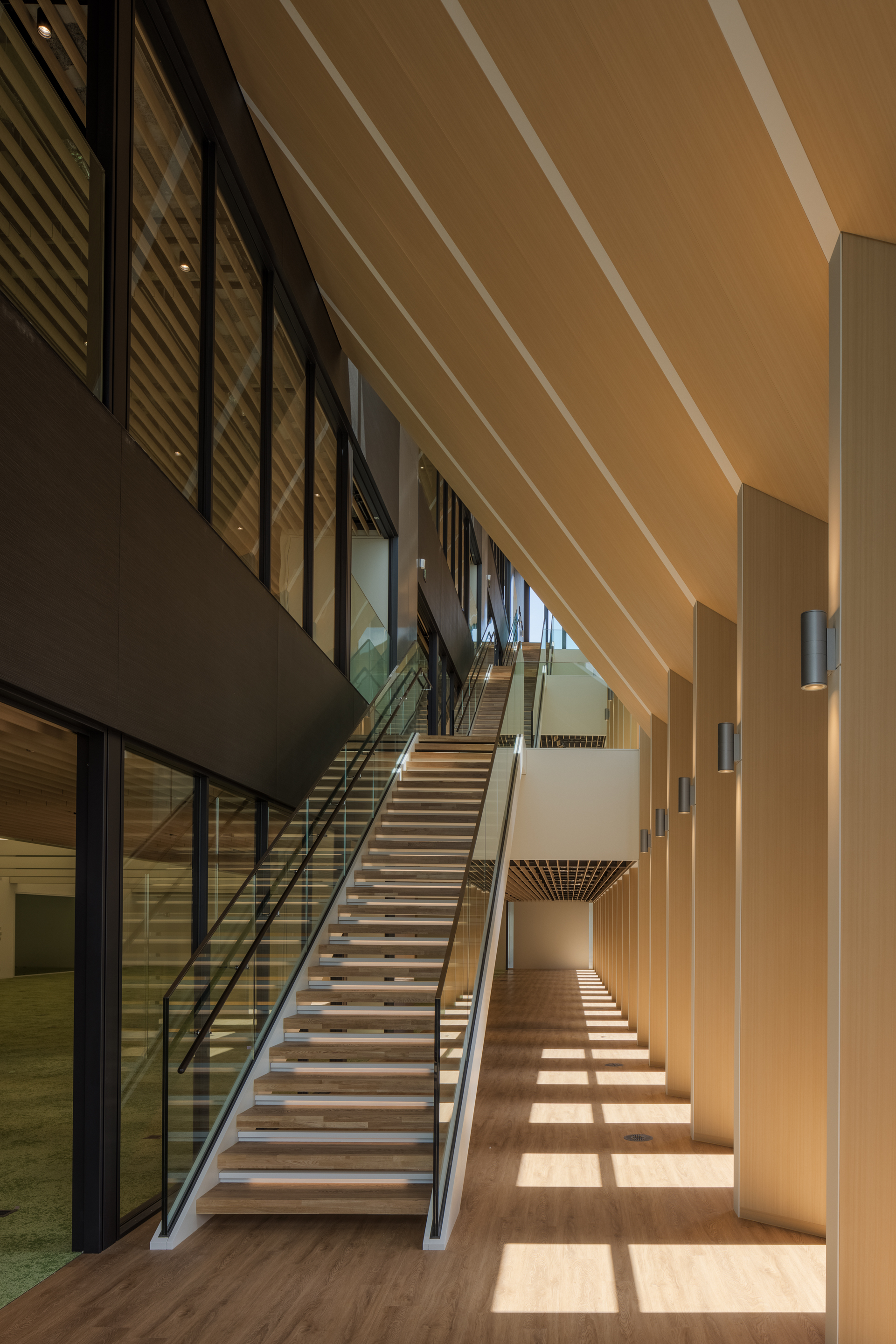
主创设计 日建设计
项目位置 日本东京都
建筑面积 9282.84平方米
竣工日期 2021年5月
本文文字由设计单位提供。
本项目是日本古都京都的老牌衡器制造商株式会社石田(ISHIDA)位于东京分公司的新办公楼。项目地块被高层公寓、国道和高速公路所包围,其东侧的道路是连接新板桥地铁站和JR板桥站的重要街道,日夜行人络绎不绝。在本项目中,建筑东面作为连接街道的界面,办公室的活动在不知不觉间渗透到外部,为街区增添了活力。建筑下部则着眼于通过构建地区长廊,以提升街道空间的品质。
This project is a new Tokyo branch office for Ishida, a long-established manufacturer of scales headquartered in Kyoto, the ancient capital of Japan. The site is surrounded by high-rise condominiums, a national highway, and an expressway, but the road to the east is an important local street that connects the Shin-Itabashi subway station and JR Itabashi station, constantly crowded with people day and night. The east side of the building was considered an interface with the city, where the activity inside will subtly spill out, adding liveliness to the cityscape. At the foot of the building, the focus was to create a community promenade by improving the quality of the street space.
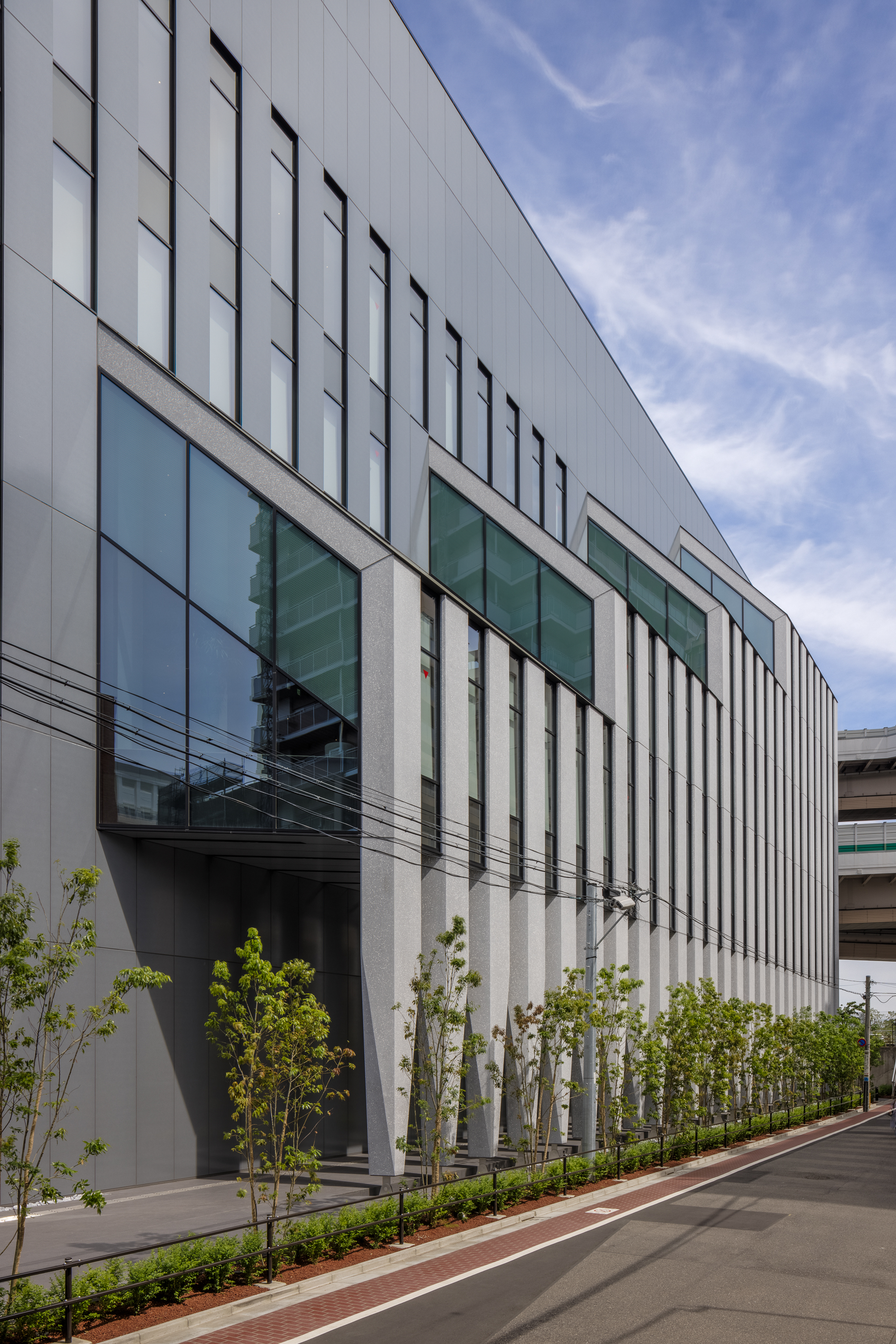
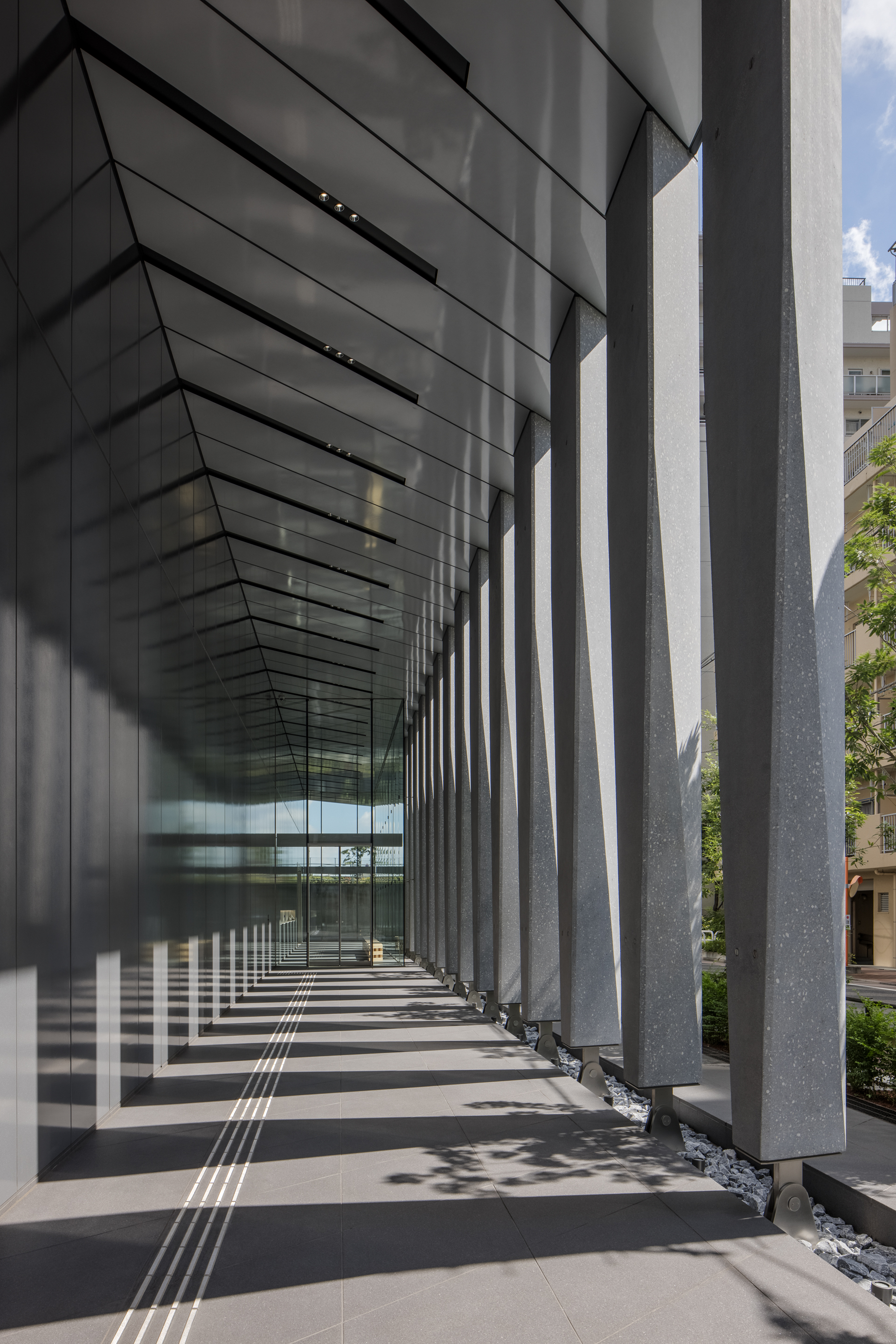
阶梯状连续的斜屋顶
A series of stepped, sloped roofs
本建筑独特的阶梯状斜屋顶外观是在遵守临街部分高度限制的同时,将连接3层到6层办公层楼梯的挑空空间予以忠实呈现而形成的。项目外装由抛光PC预制板(预制混凝土)、切割铝面板、挤出成型水泥板和铝合金窗框等构成。项目团队在施工上严格把控细节,采用通缝工艺,即以一条接缝线为界切换外装材料。
The building’s characteristic stepped appearance is a direct visualization of the atrium spaces above the stairs that connect the offices from the third to sixth floors, while keeping with the height restrictions. The exterior is composed of polished precast concrete (PC) slabs, aluminum cut panels, extruded cement slabs, and aluminum sashes, carefully designed so that the shift in materials happens at the joints.

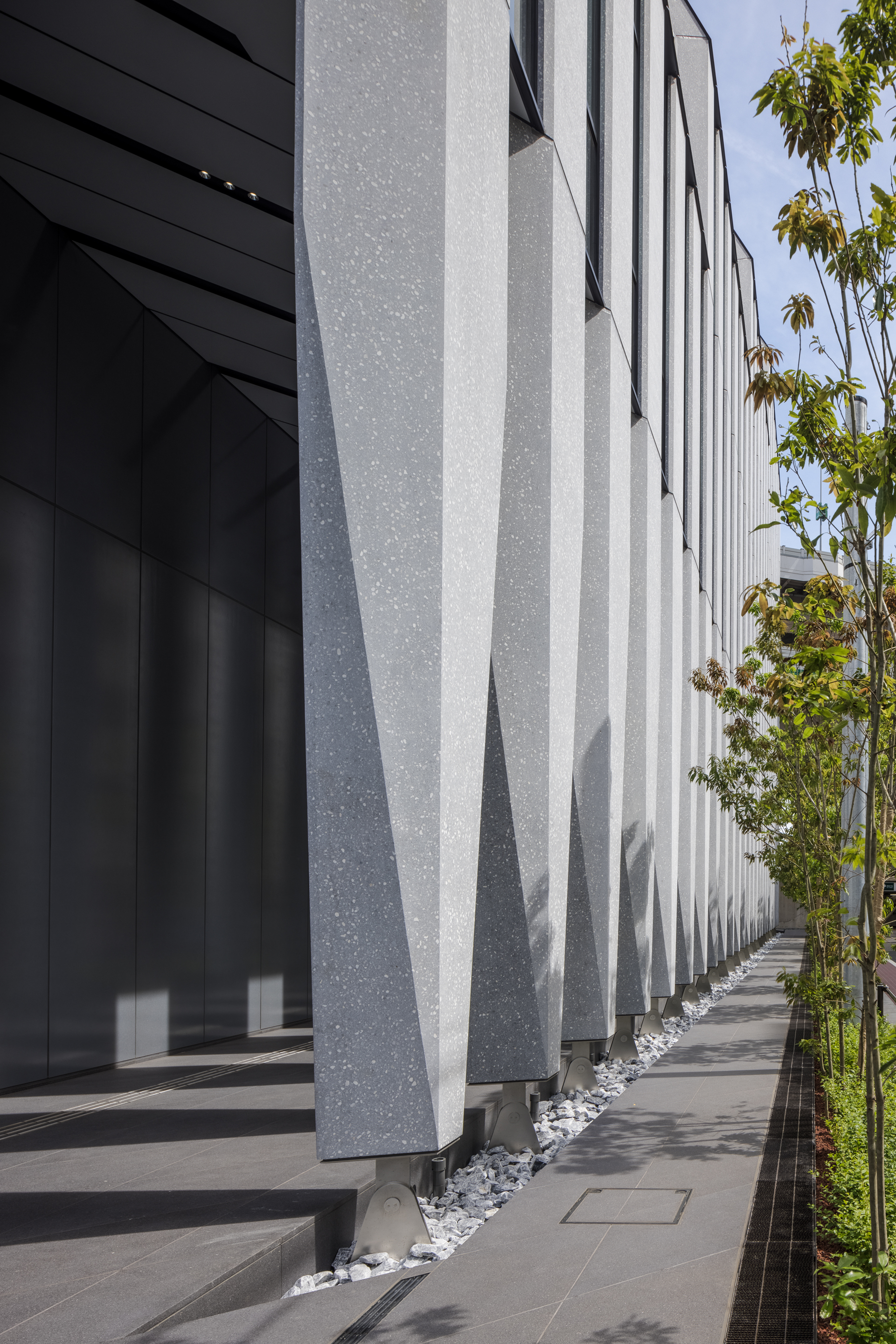
由素面抛光PC柱构成的柱廊将入口空间掩于其后,既与城市空间形成软性隔断,又与外部空间融为一体。早晨,柱廊形成的光影交错为一天的开始增色不少;黄昏时,柔和光线丰富了城市的表情。对于上部楼层而言,立柱包裹着内侧阶梯状倾斜的挑空空间,形成了一个自然通风、人们可随意走动的办公空间。
The entrance space is surrounded by a row of solid polished prestressed concrete columns, creating a soft boundary with the city while integrating the outside space. The light and shadow pattern created by the colonnade in the morning colors the beginning of the day, and at dusk, the soft light enriches the expression of the city. On the upper floors, the colonnade contains a staircase-like diagonal atrium space, creating a workspace where people can move, and the wind can blow through.
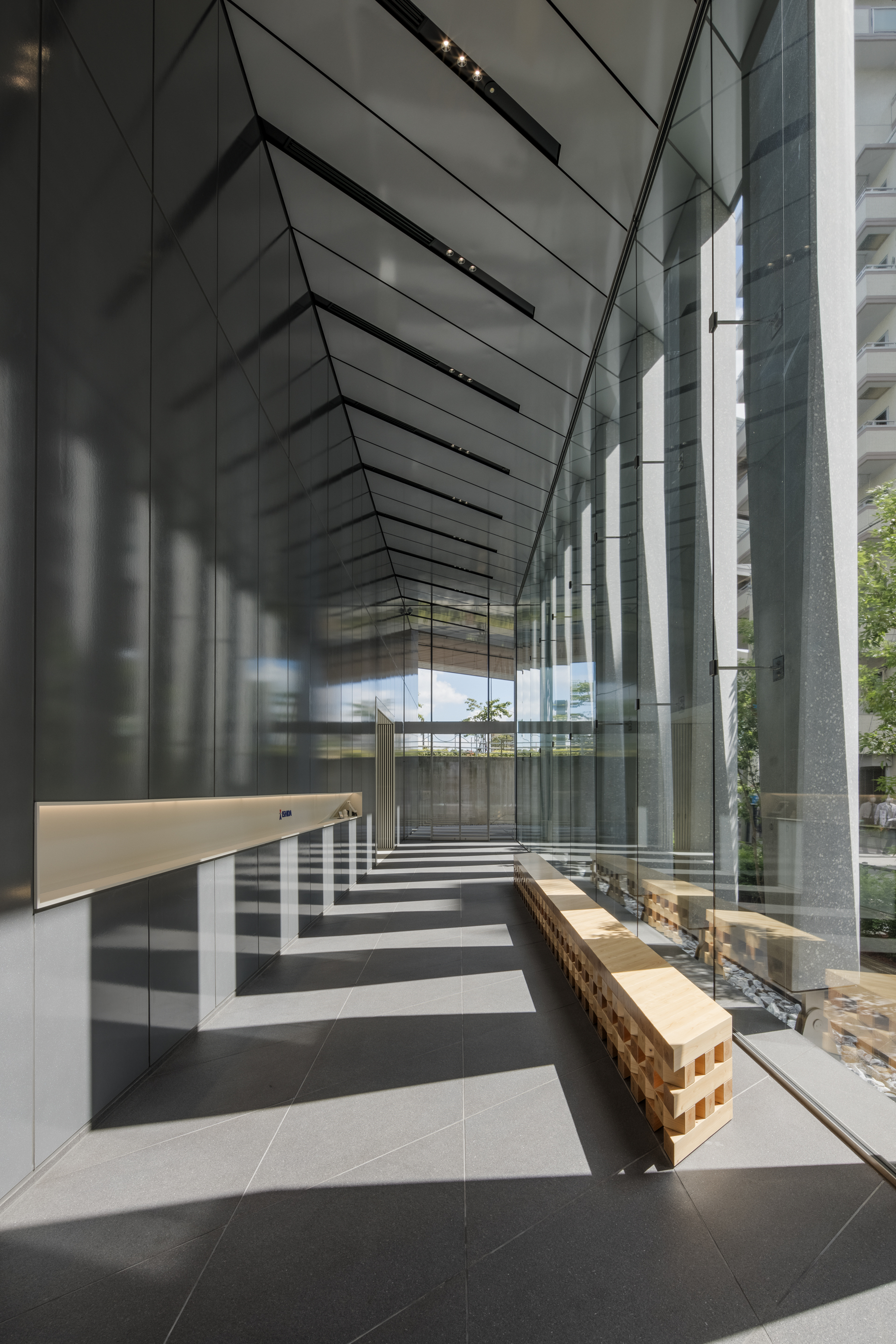

舒适的办公空间
A comfortable workplace
相较于体现业主尖端技术企业形象的刚毅简约外观,建筑的内部空间更专注于如何让员工舒适地工作。办公空间分为两个区域:一个是天花板较高的开放式空间“白区”,另一个则是天花板较低、令人沉心静气的“木区”。工作人员可自由选择往返于两个区域的办公方式。
In contrast to the stoic, minimalist exterior that embodies the client company’s cutting-edge technology, the interior space focuses on worker comfort. We proposed a work style in which workers can freely choose between two zones: an open “white” workplace with high ceilings, and a “wooden” zone with low ceilings and a calm atmosphere.

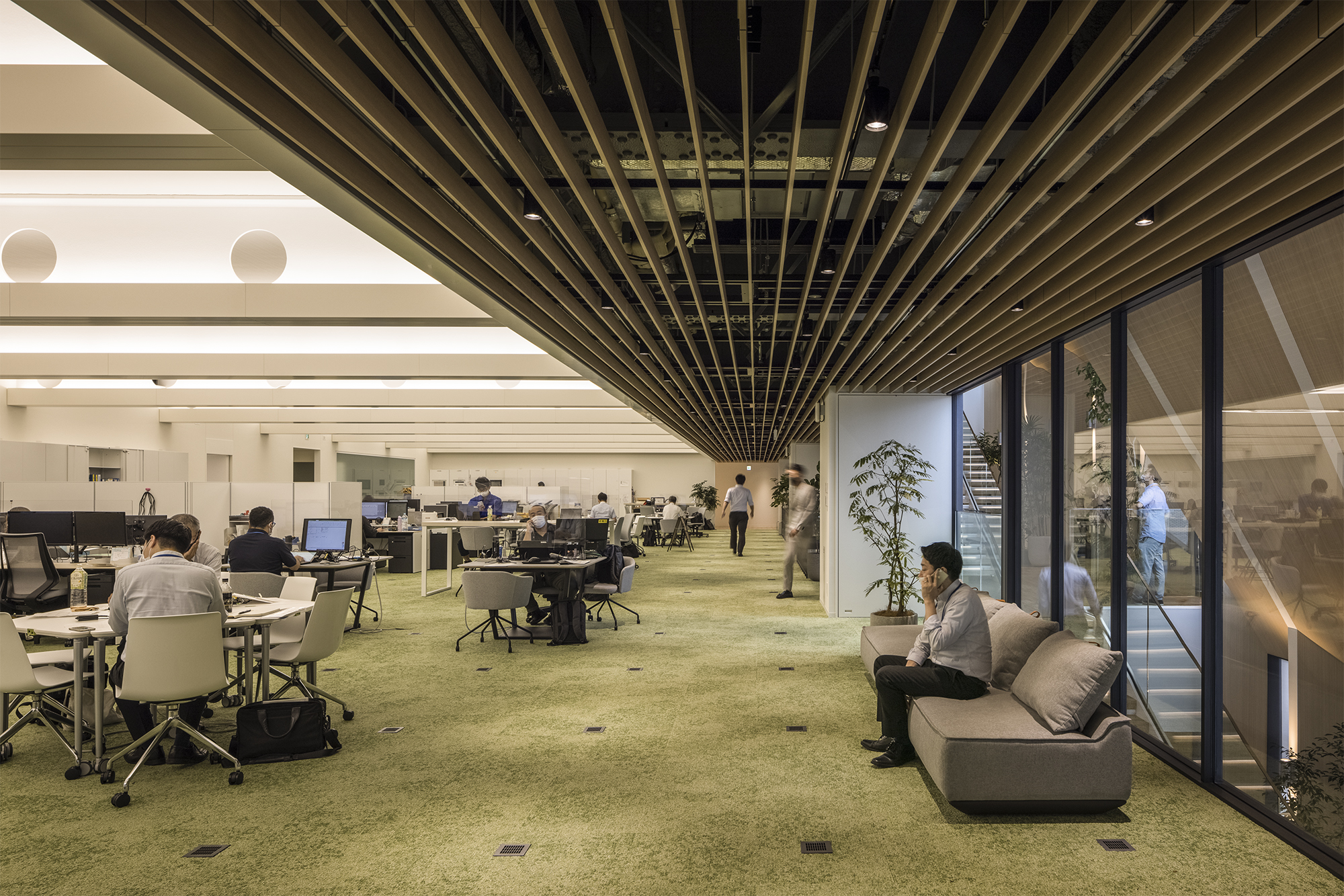
“白区”充分利用了层高4米的建筑主体结构。简洁的天花板由涂有白色防火涂料、3600毫米间距的钢梁和白色甲板面构成,表面被设计成抽象的光反射面。设计尽量减少机器设备,让人们能够感受到间接照明的柔和光线,打造出令人凝神静气的空间。光源既不会直射人眼,也不会映射到电脑屏幕上。
The “white” zone is a space that makes the most of the 4-meter floor height by exposing the building frame. The simple ceiling, consisting of steel beams set at 3,600 mm pitch, painted with white fireproof paint and finished with a white deck, was designed as an abstract light-reflecting surface. Visible equipment was minimized, with the aim of creating a calm and focused space where people can feel only indirect, soft light. No light sources penetrate the eye, and no reflections can be seen on computer screens.
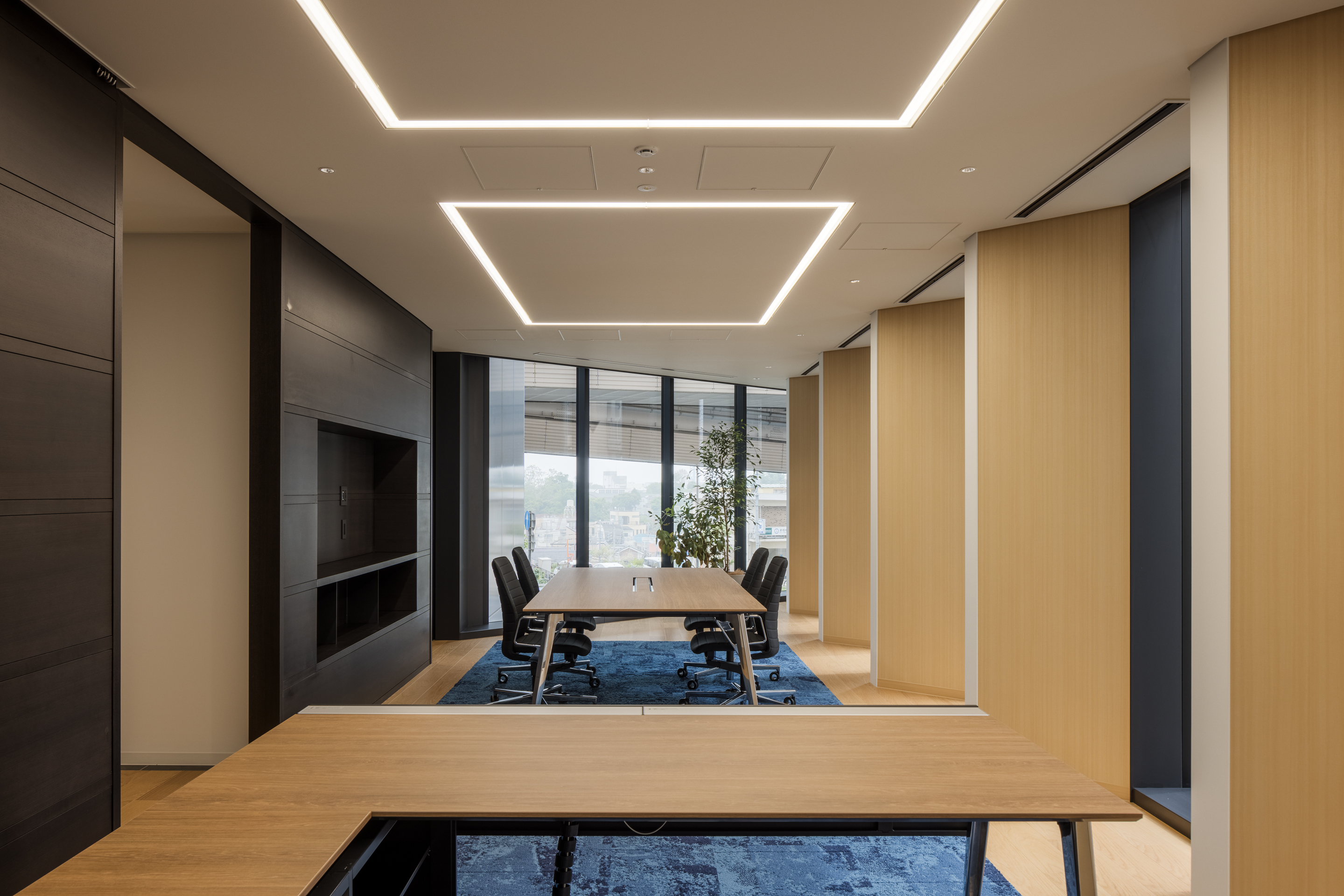
空调出风和自然通风带来的外部空气沿着天花板面静静流动,丝毫不会引起工作人员的注意,形成舒适的环境。这种环境的实现是基于对建筑尺寸的调整、反复的环境模拟、现场施工阶段的仔细微调,以及竣工后基于测定结果的进一步调整。
Conditioned air and naturally ventilated outside air flow along the ceiling surface, creating a comfortable environment without being perceptible. This was realized based on a repetition of environmental simulations at the planning stage, careful fine-tuning on site, and further adjustments based on post-completion measurements.
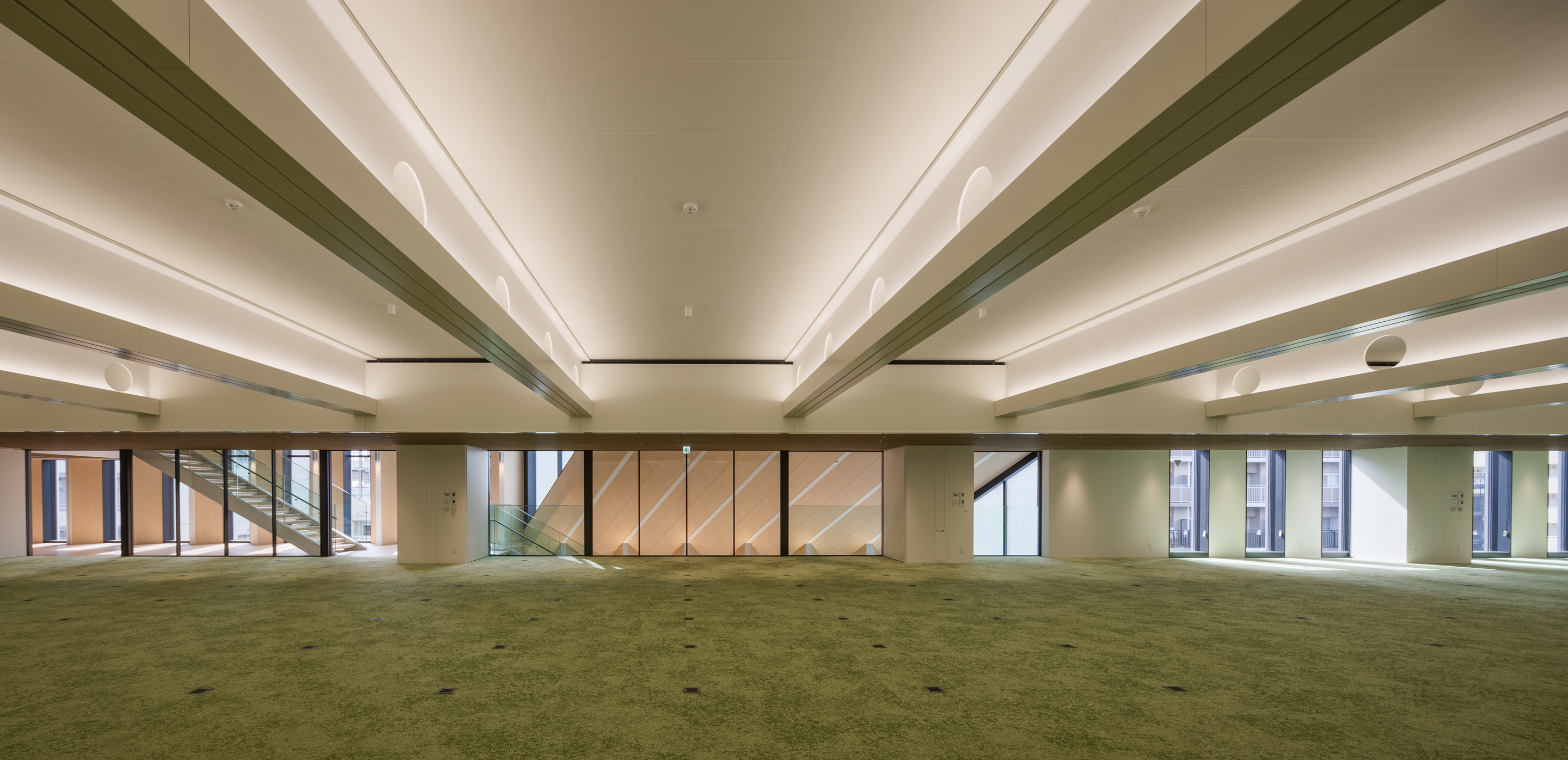
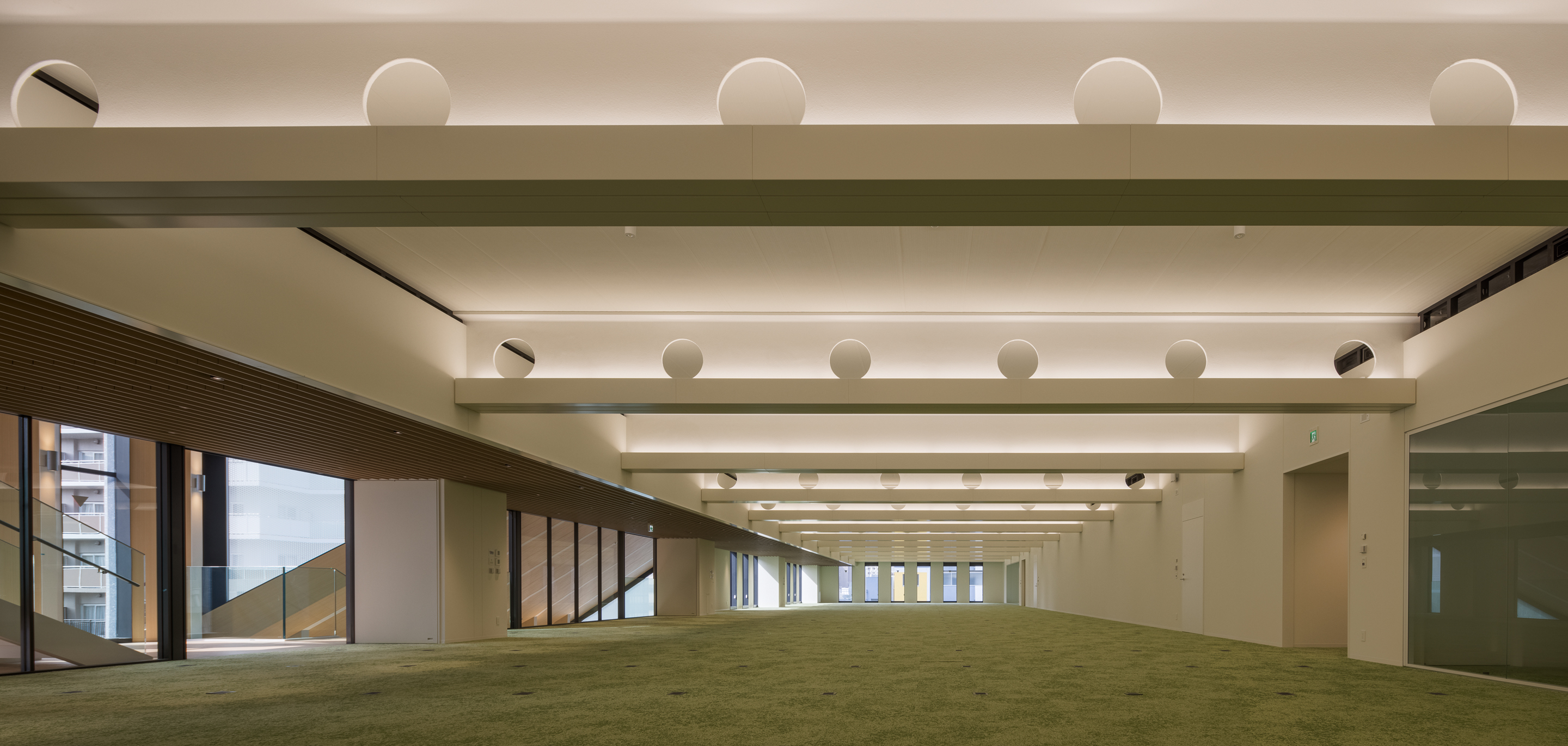
与之相较,“木区”作为注重交流的木质空间,力求通过控制天花板的高度形成重心较低的空间尺度。该区可以简单自由地改变家具的摆放和照明配置。斜向挑空空间和楼梯纵向连接三、四、五层的办公楼层及六层的展厅楼层,旨在激活楼层之间的立体沟通。此外,设计师通过积极进行自然通风,打造清风徐来、阳光满溢的空间,使员工在工作的同时也能感受到城市中时间的流逝与街区的氛围。
The “wood” zone, on the other hand, is a communication-oriented space with a low ceiling height, designed to create a human-scale space with a low center of gravity. The furniture layout and lighting arrangement can be easily and freely changed. The diagonal atrium and staircase connect the 3rd, 4th, and 5th office floors with the showroom/hall on the 6th floor and are intended to activate communication between the floors. Natural ventilation and lighting allow winds to flow through and natural light to flood the space, so that workers can feel the passing time and atmosphere of the city while they work.
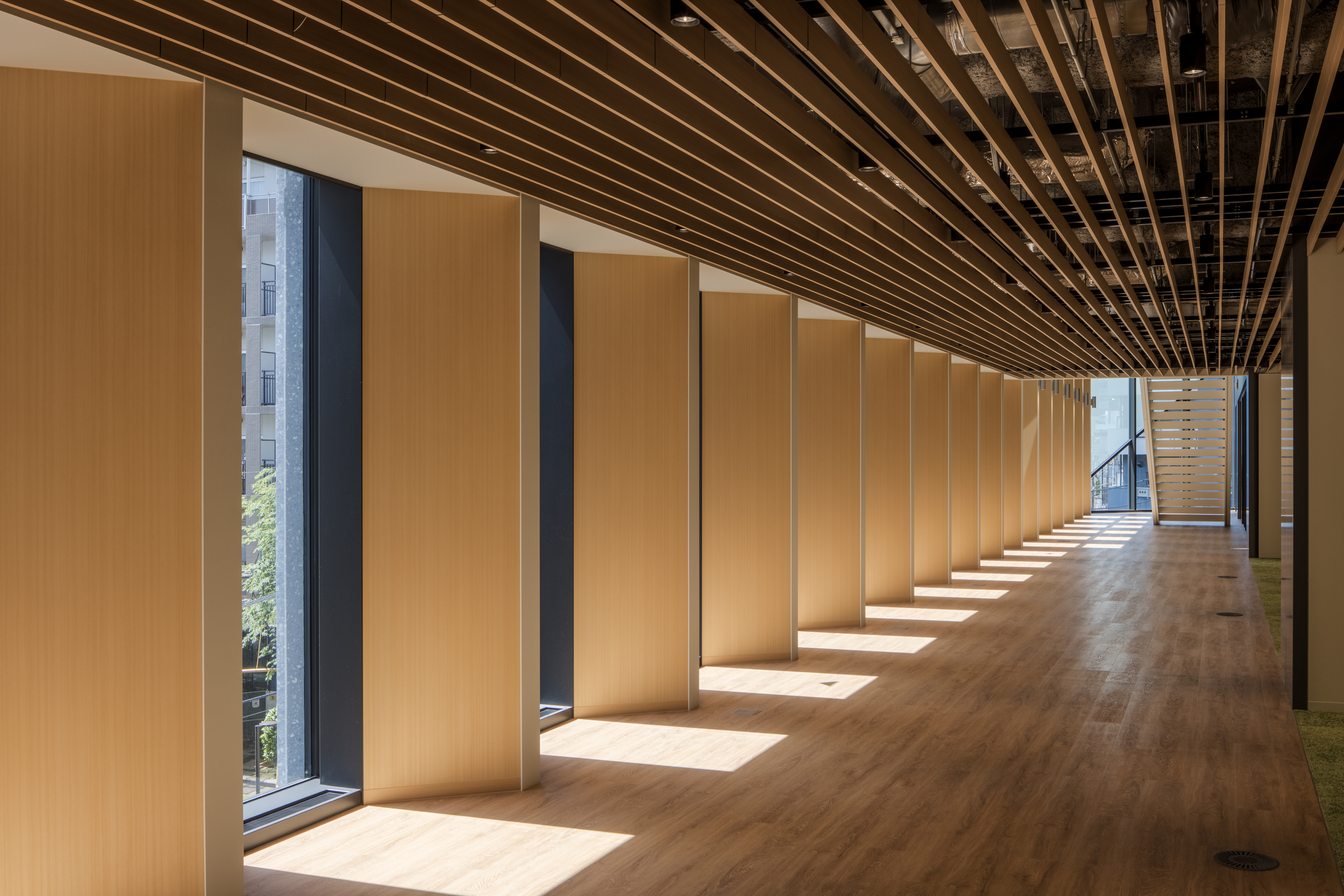
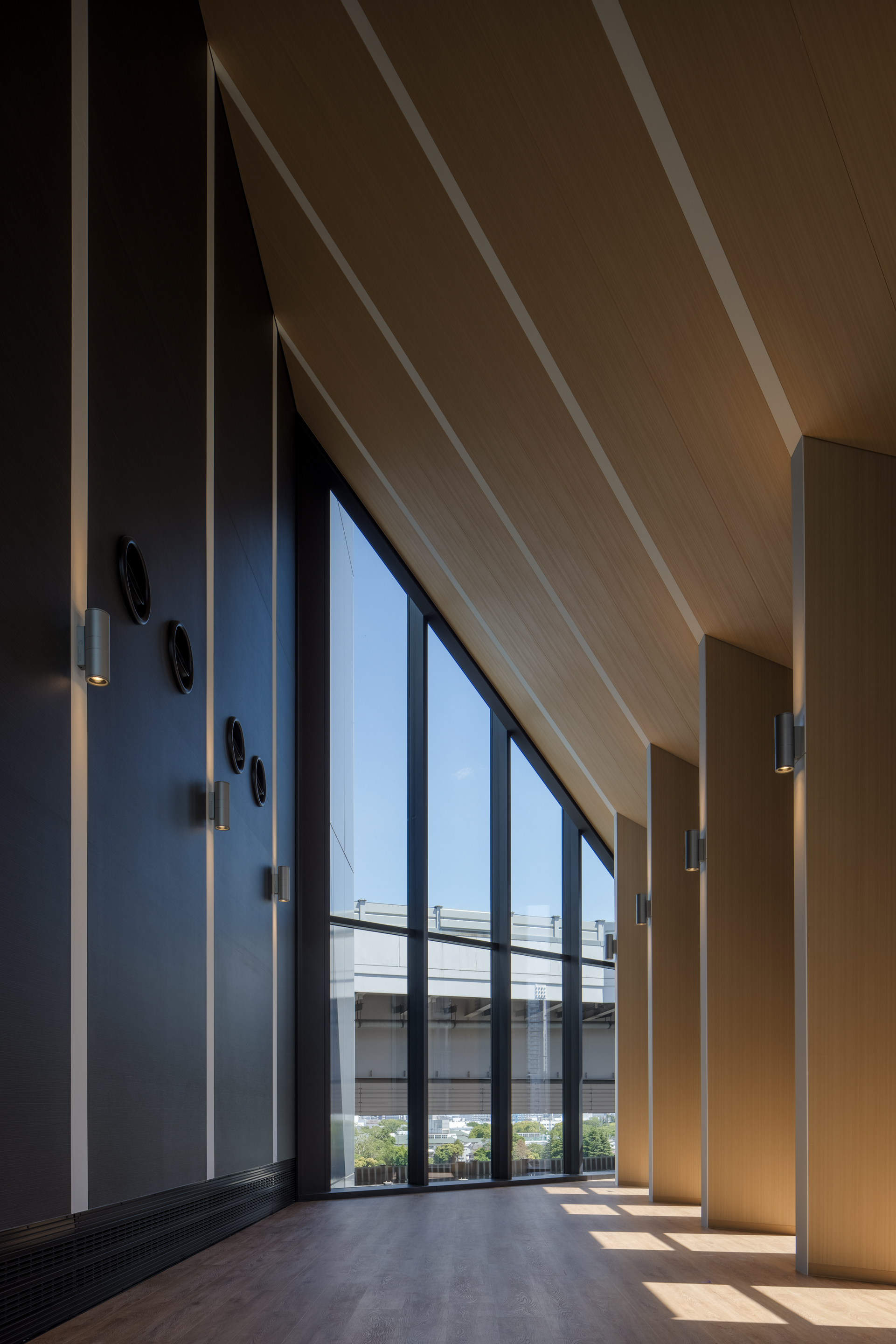
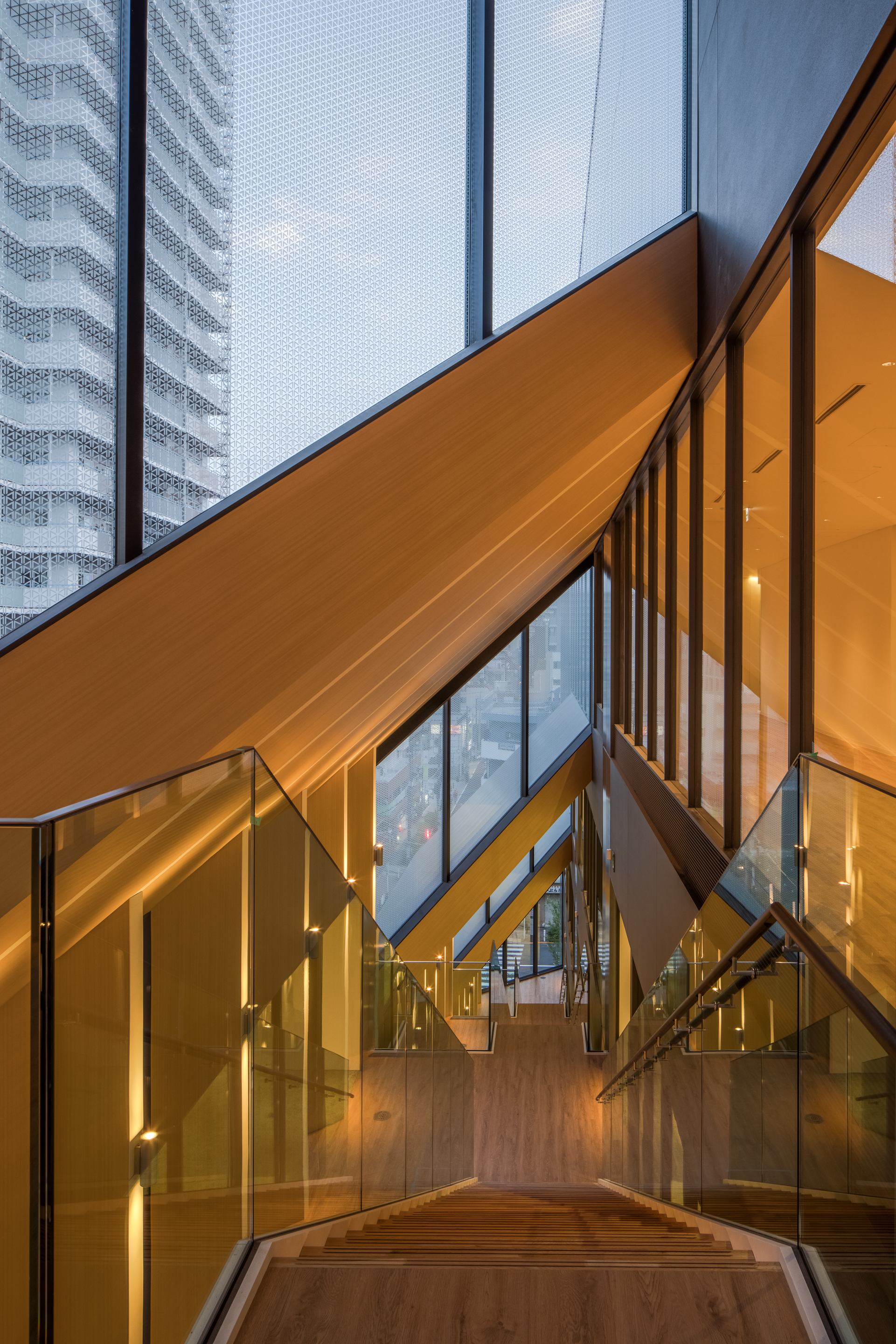
往来于“白区”与“木区”之间的办公模式反映了业主各部门和员工多样化的工作方式,设计师也希望借此设计为日常活动注入新鲜活力。
We hope that the “white” and “wooden” zones will reflect the diverse work styles of the client’s various departments and individuals and stimulate their daily activities.
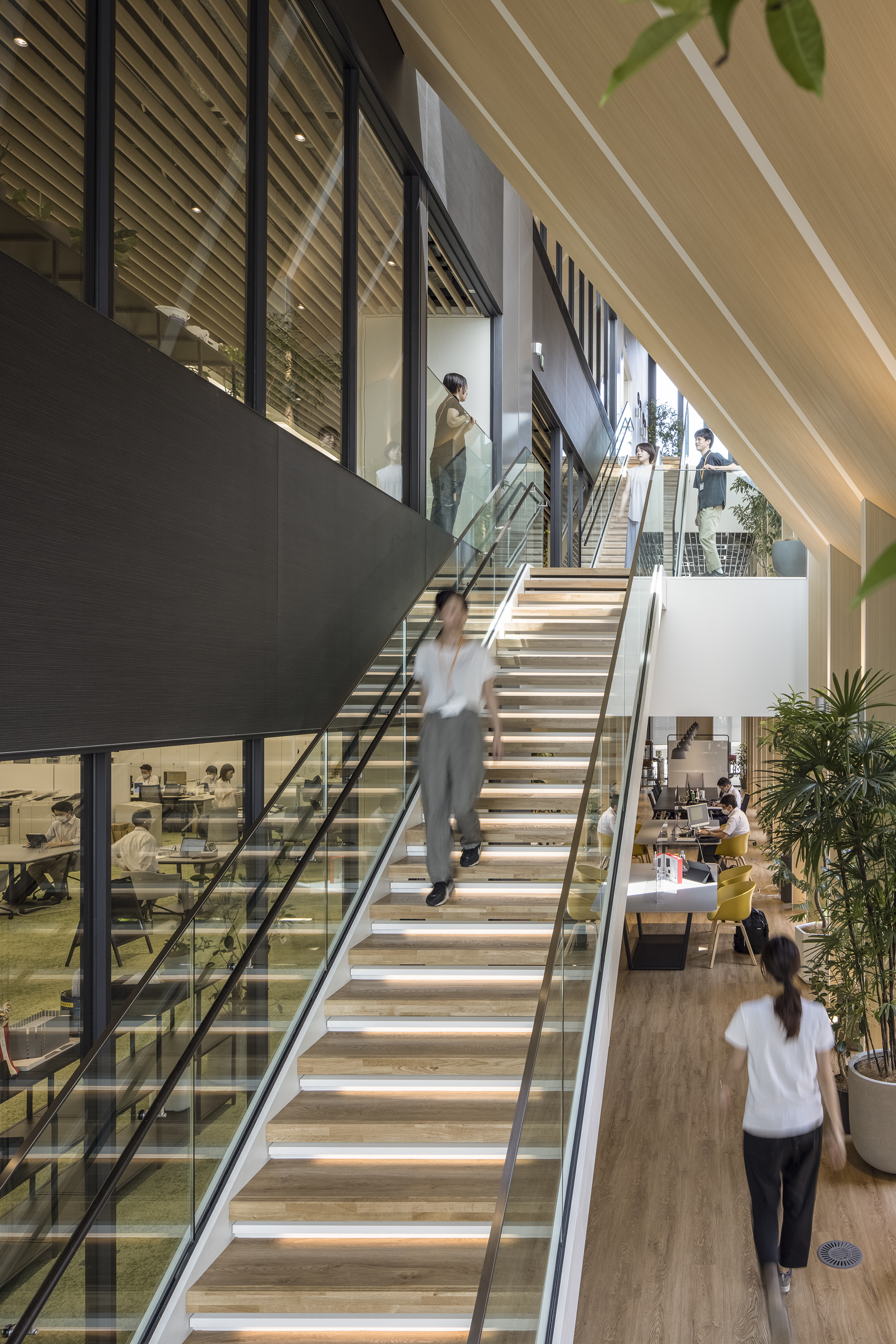
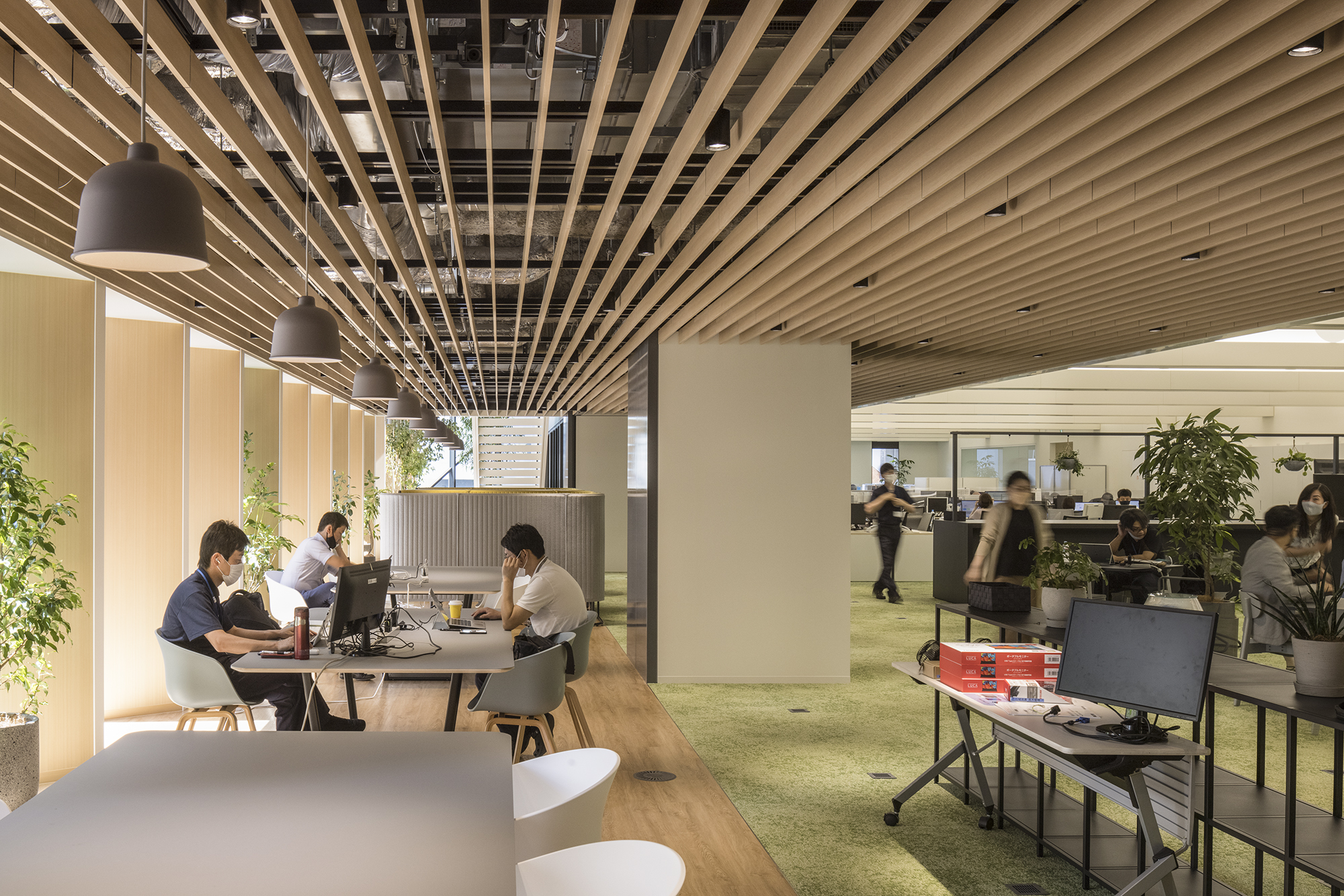
经济适用型ZEB(零能耗建筑)办公楼
Environmental variability creates a casual ZEB office
设计师通过巧妙组合各种经济通用型技术,并融入自然元素,打造出多样化的室内环境。在ABW(activity based working)工作模式下,不均匀的室内环境在作为空间自身的魅力所在被大家接受的同时,也提升了舒适性、健康性和节能性。建筑的能耗降低61%,实际运营达到准净零能耗(ZEB Ready)建筑的标准。
A diversity of interior environments was achieved by creatively combining inexpensive, general-purpose technologies and natural elements. With activity-based working gaining popularity, the variable indoor environment was accepted as an attractive feature that improves comfort, health, and energy conservation. The actual energy performance value is 61% above standard, achieving “ZEB ready” operational performance.
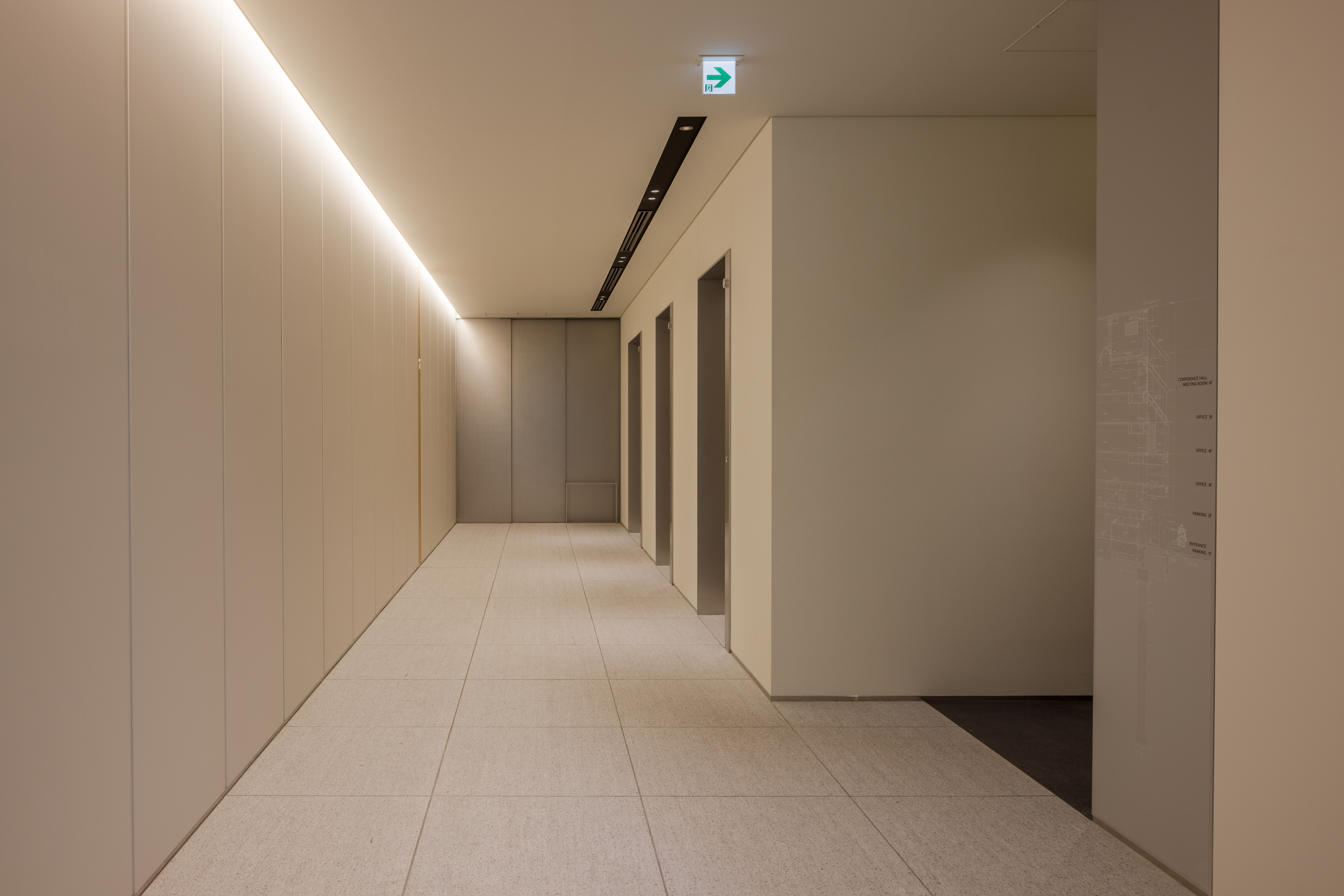

无风感、无眩光的办公空间
A draft-free, glare-free workplace
空调采用利用康达效应(Coanda Effect)的无风管空调和地板吸气的One-way方式,可按照10.8米的跨距切换辐射/对流模式。设计实现了没有上下温差和风感的高顶棚空间,在提高通风效率的同时降低了感染的风险。此外,设计师还引入了将挑空空间作为重力通风通道的自然通风系统,利用采光顶等实现自然采光,并积极利用雨水等各种自然能源。
The air conditioning system is a one-way ductless system using the Coanda effect and floor suction, and the plan allows switching between radiant and convection modes at every 10.8 m span. A high-ceiling space with no vertical temperature difference and no draft was realized to improve ventilation efficiency and reduce the risk of airborne virus transmission. Natural ventilation was introduced by using the vaulted space as a gravity ventilation pathway, and natural resources were actively incorporated through features like natural top lights and rainwater utilization.
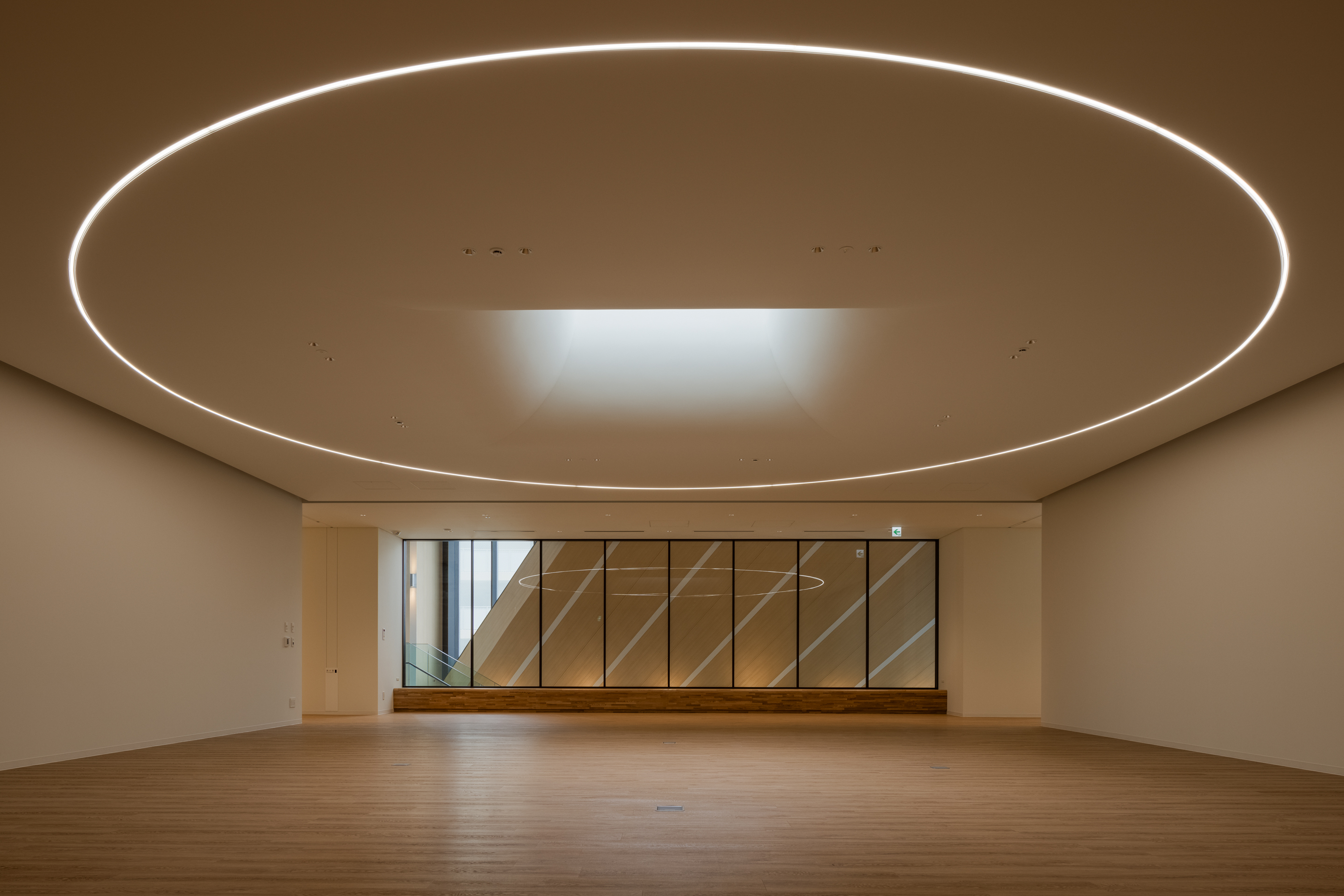
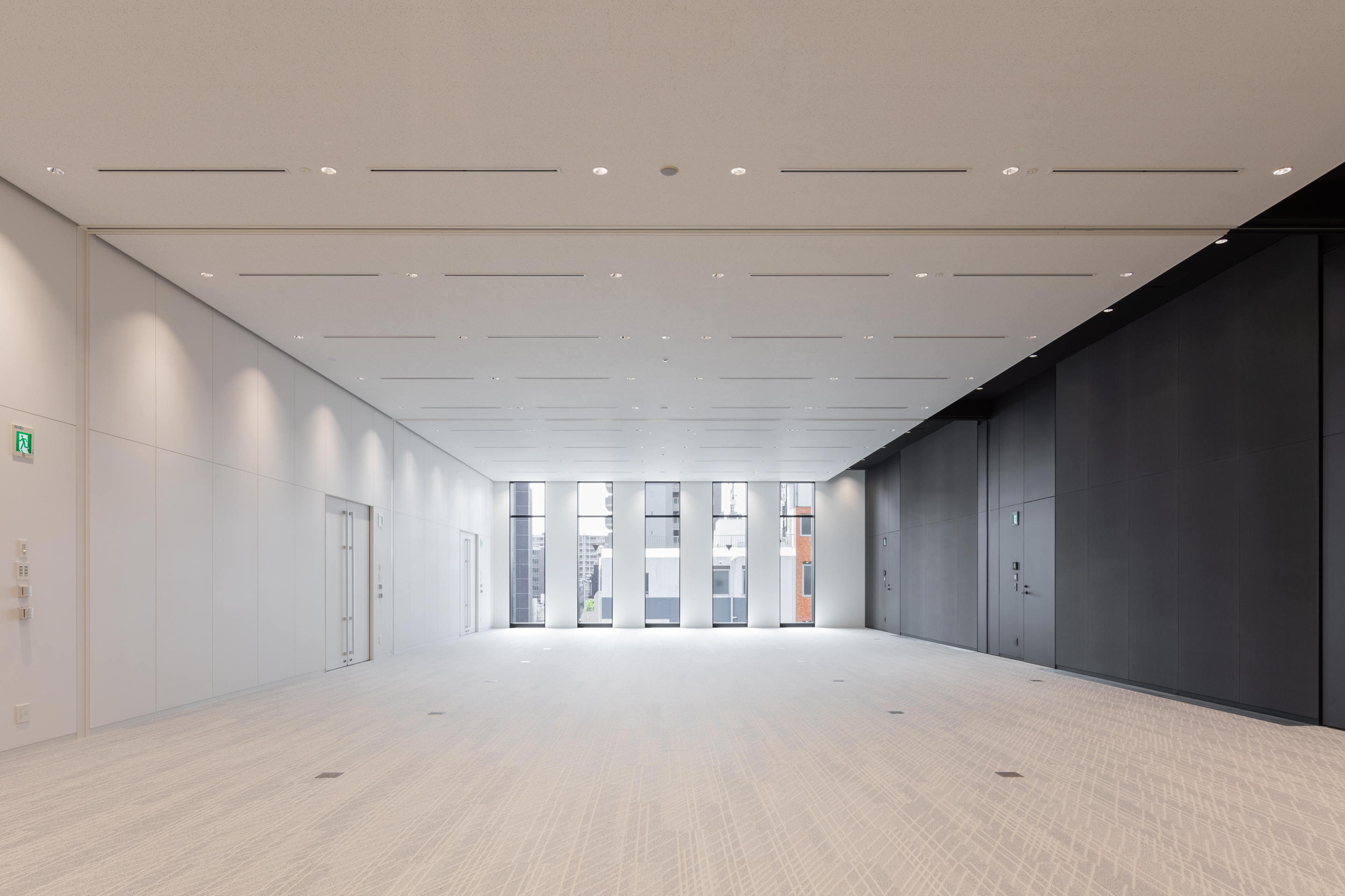
照明仅采用梁型的间接照明,实现了无眩光和高亮度感的光环境。设计在确保桌面照度为600勒克斯的同时,实现6.5瓦每平方米的功耗水平,并通过控制日光使用实现了节能。
A bright and glare-free environment was achieved through the exclusive use of indirect lighting in the form of beams. Power consumption of 6.5 W/m2 is achieved while maintaining an illuminance of 600 lx on the desk surface, and energy is saved by controlled daylight usage.
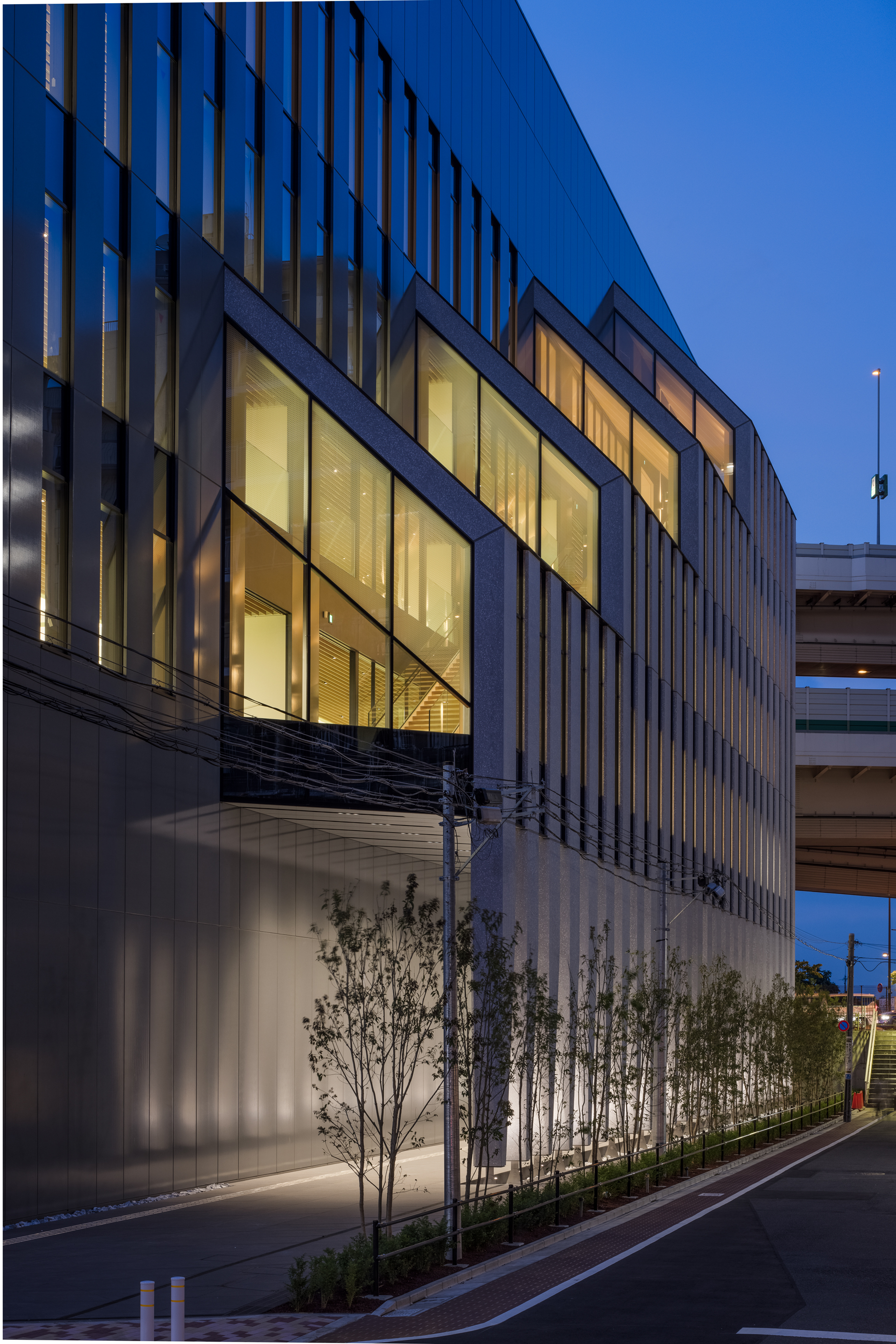
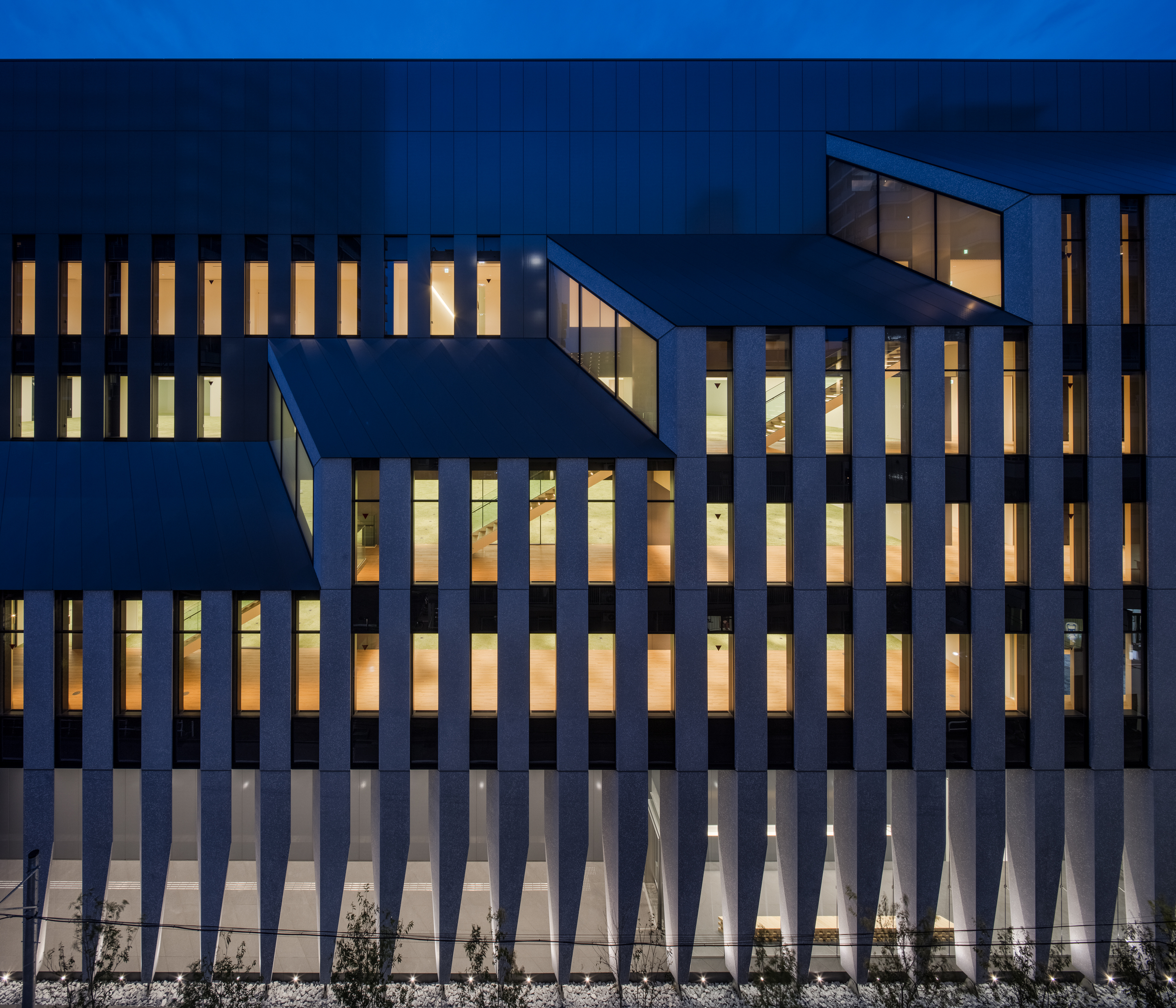
设计图纸 ▽
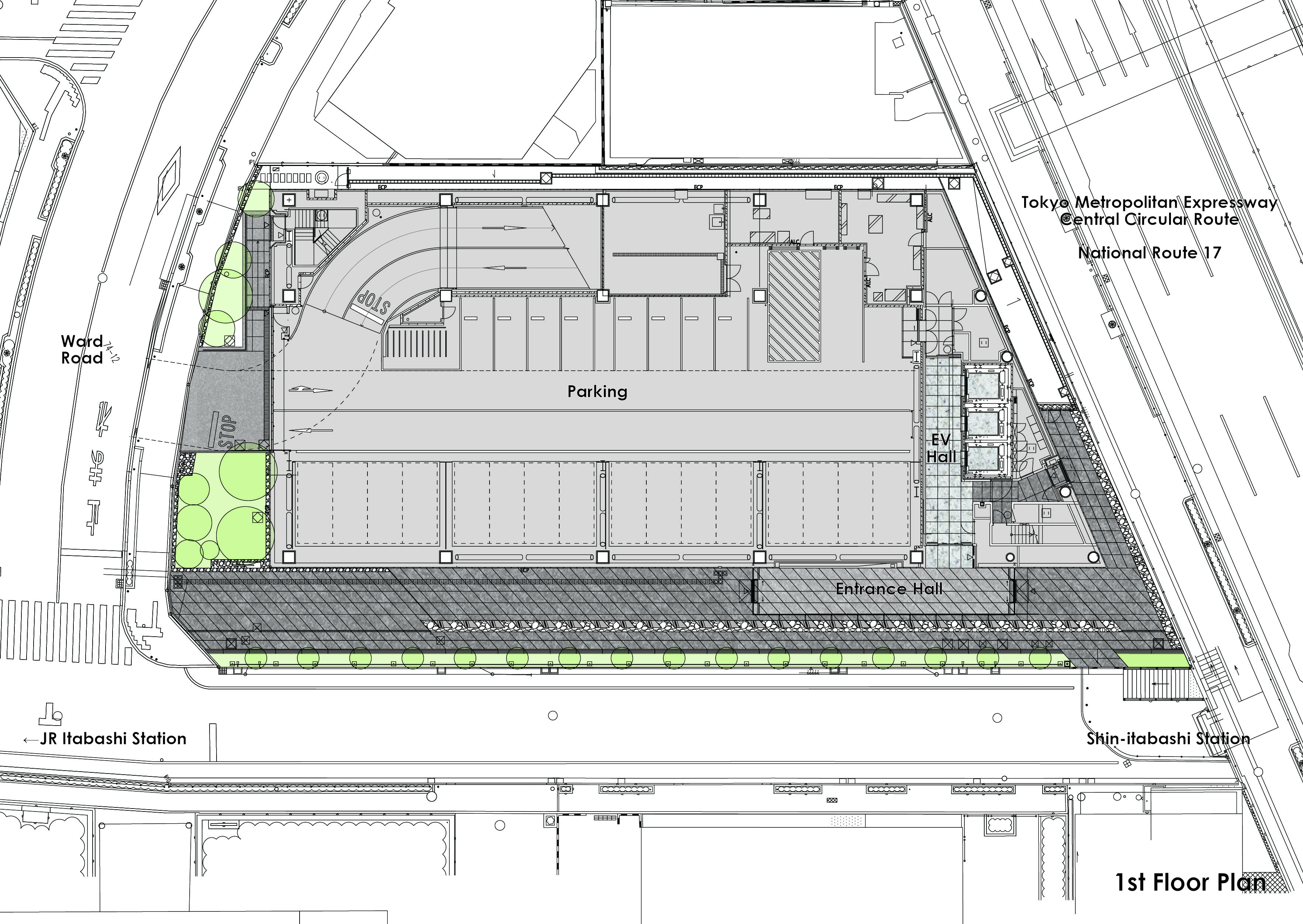

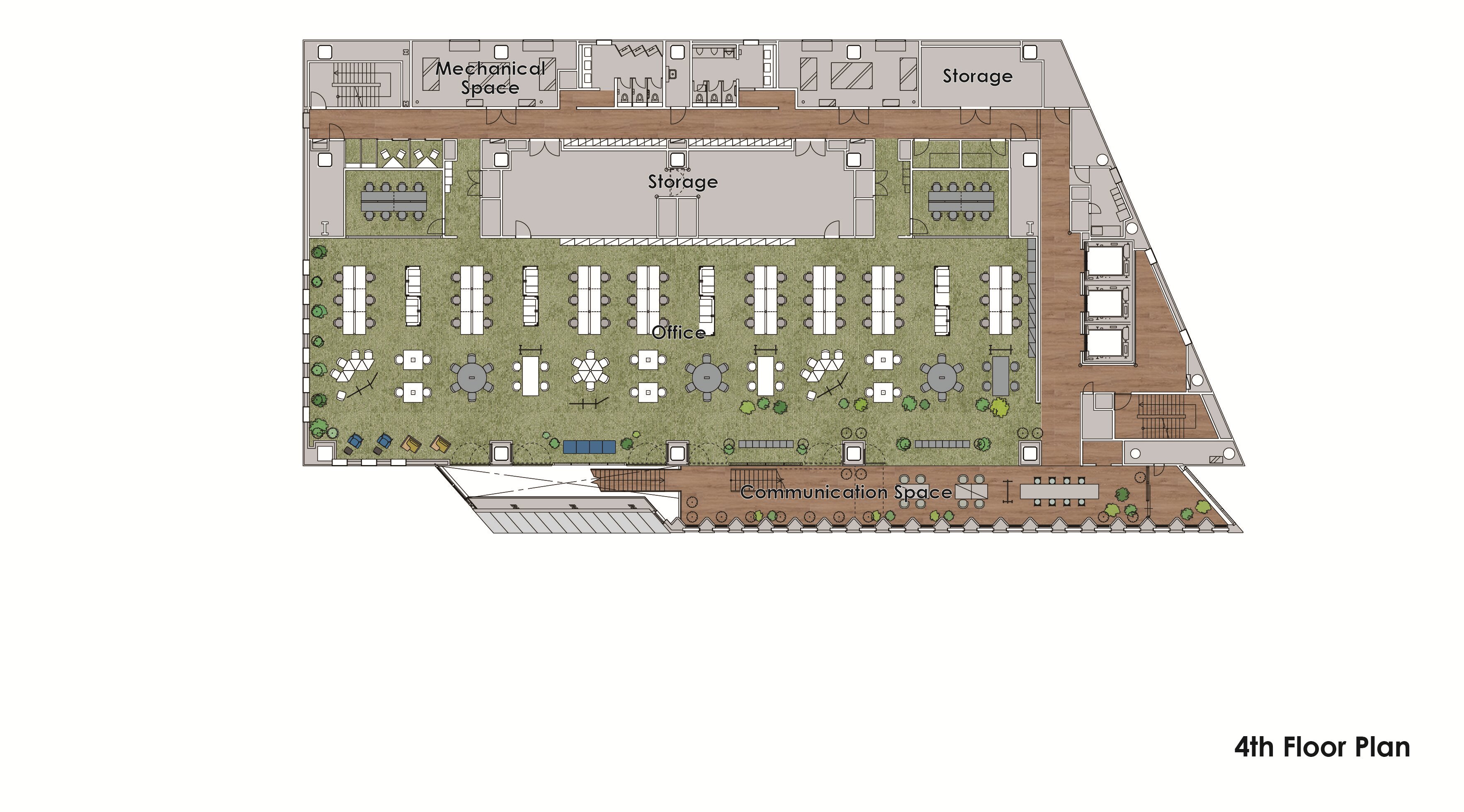
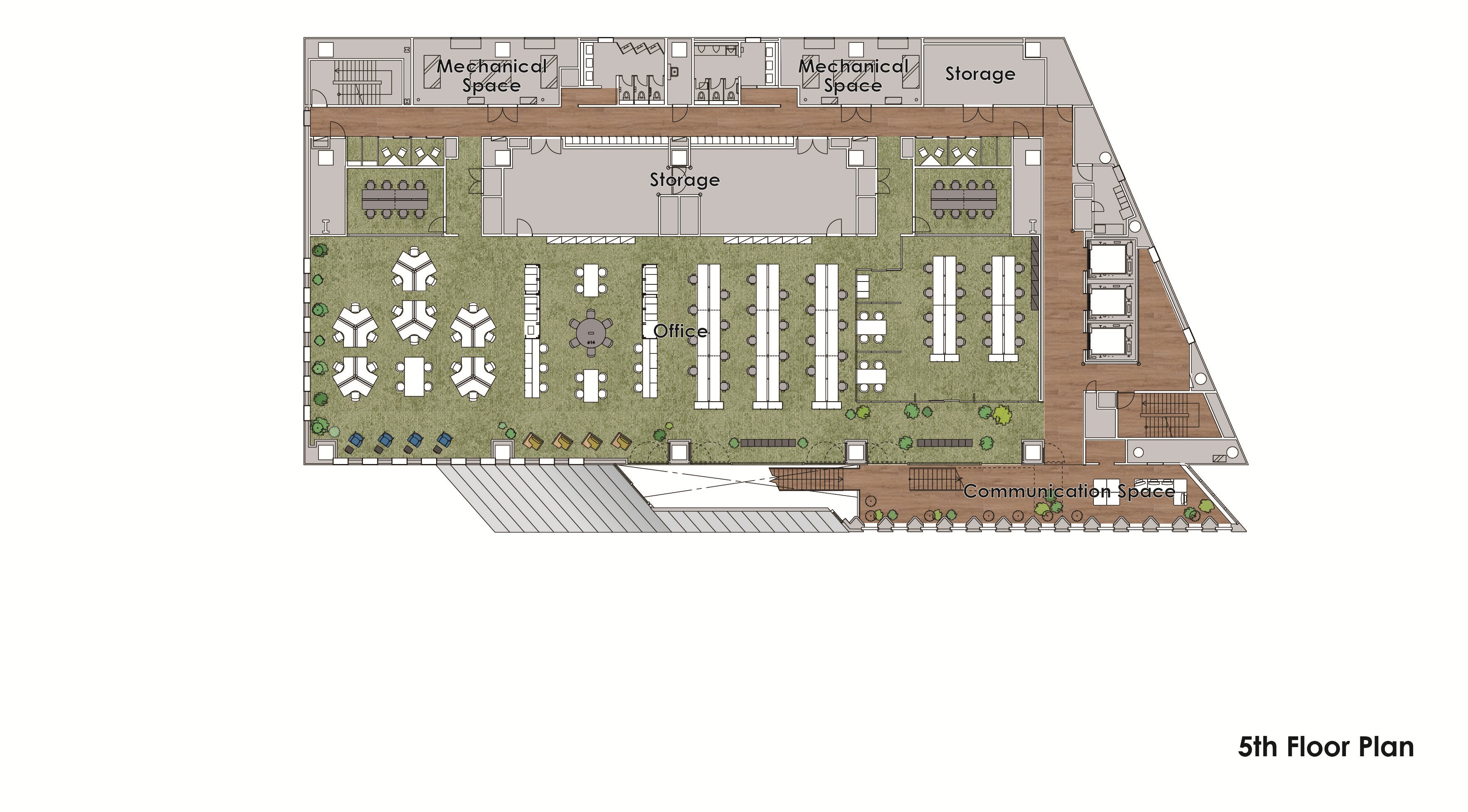


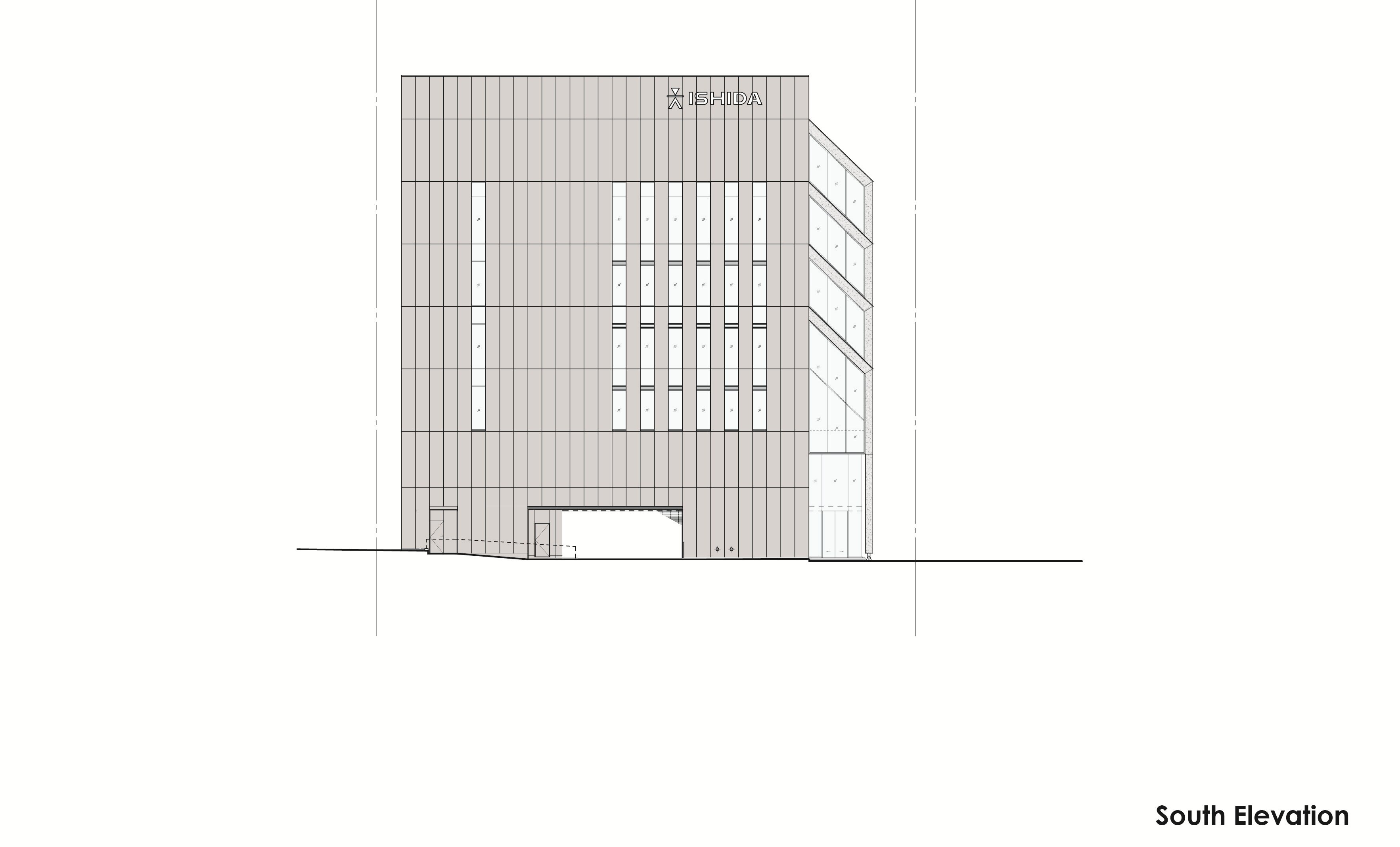

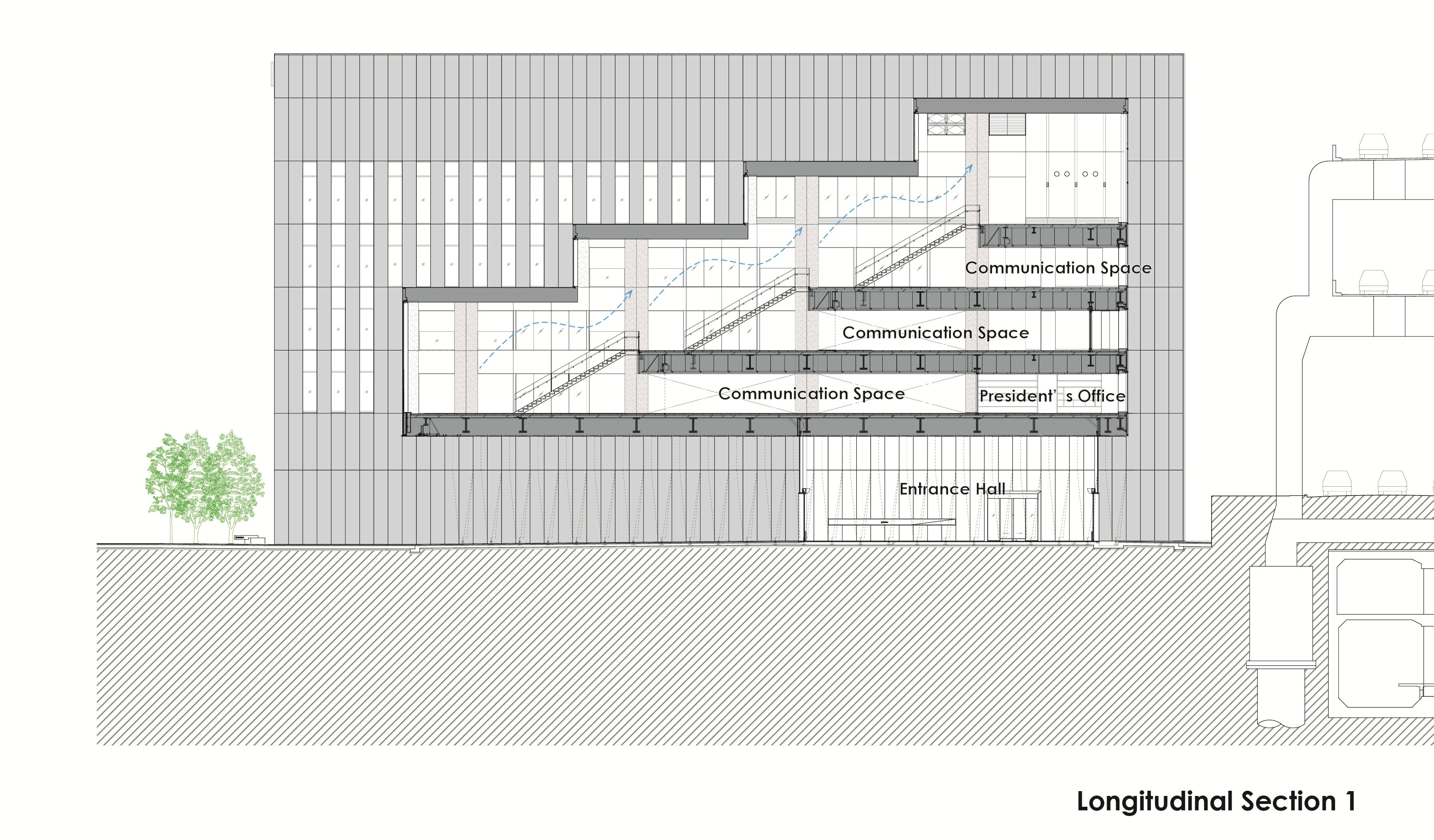
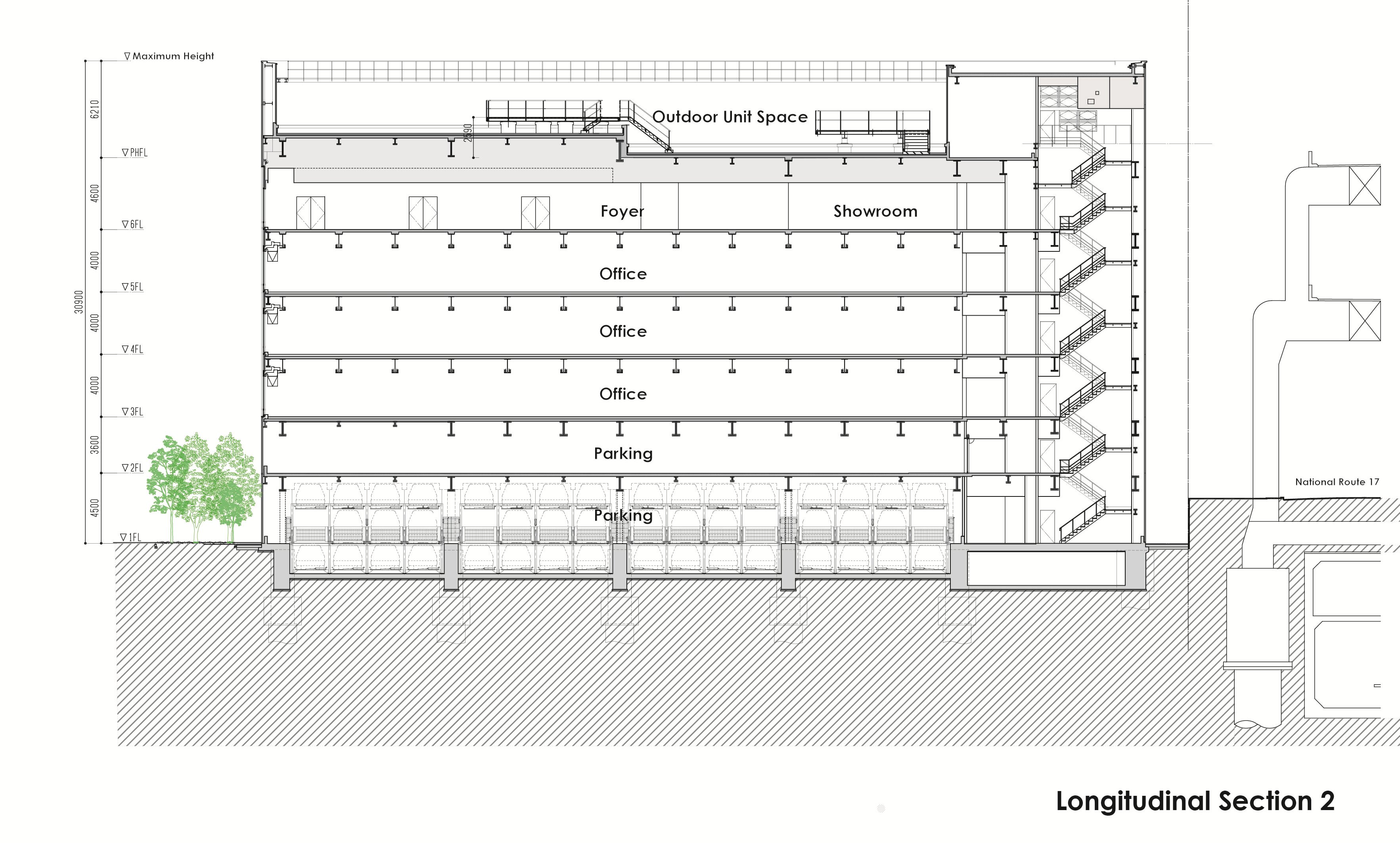

完整项目信息
项目名称:石田东京第一大厦
项目用途:办公楼
项目位置:日本东京都
用地面积:2105.58平方米
建筑面积:9282.84平方米
建筑层数:6层+设备间1层
檐口高度/最高高度:29.908米/30.908米
主体结构:钢结构
竣工日期:2021年5月
项目业主:株式会社石田
主创设计:日建设计
施工单位:前田建设工业
项目摄影:Ken’ichi Suzuki
版权声明:本文由日建设计授权发布。欢迎转发,禁止以有方编辑版本转载。
投稿邮箱:media@archiposition.com
上一篇:扎哈事务所最新方案:绍兴曹娥江文化艺术中心
下一篇:靖江滨江新城长阳邻里中心 / 南大建筑钟华颖工作室